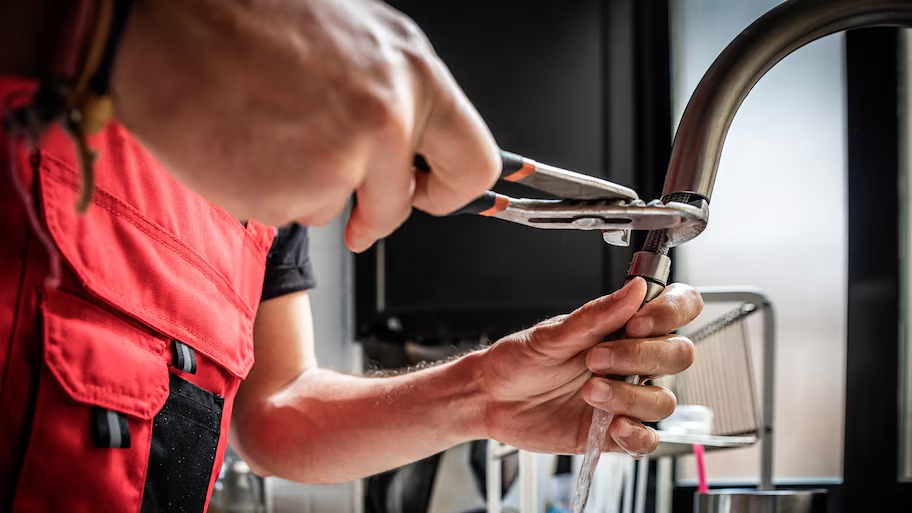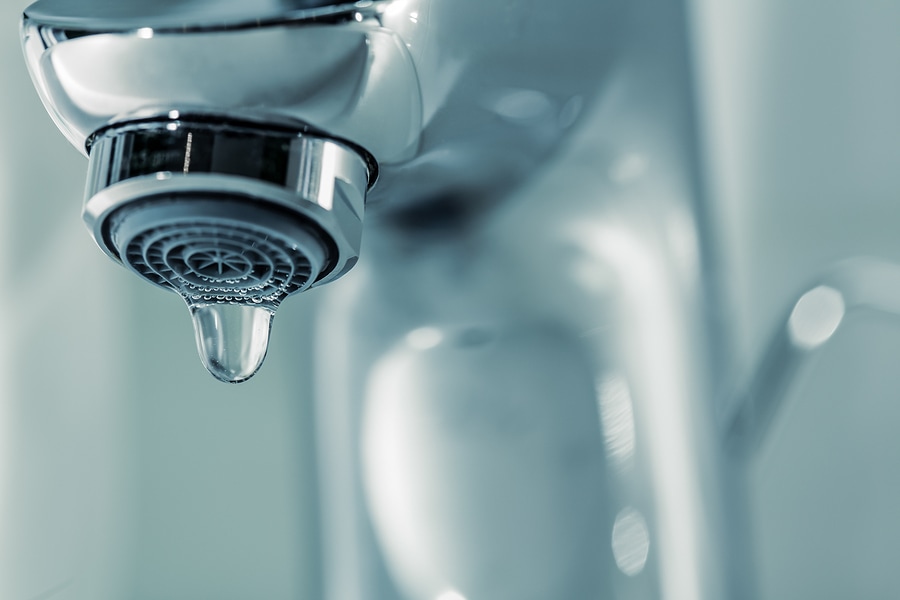Do you find yourself in search of additional info on 4 Common Reasons for a Leaky Faucet?

Dripping faucets could seem like a minor aggravation, but their effect goes beyond just the inconvenience of the noise. From wasting water to sustaining unneeded monetary expenses and health and wellness risks, overlooking a leaking faucet can bring about different effects. In this post, we'll look into why it's important to address this typical house issue promptly and efficiently.
Waste of Water
Ecological Impact
Trickling taps add dramatically to water wastefulness. According to the Environmental Protection Agency (EPA), a single faucet leaking at one drip per second can lose more than 3,000 gallons of water per year. This not just pressures water resources but also influences ecosystems and wild animals depending on them.
Financial Prices
Enhanced Water Costs
Past the environmental impact, leaking faucets can pump up water bills considerably. The collected waste with time translates into greater utility costs, which could have been prevented with prompt repair services.
Potential Residential Or Commercial Property Damages
Additionally, extended dripping can lead to harm to components and surface areas bordering the faucet. Water buildup can create discoloration, rust, and also structural problems if left neglected, resulting in additional fixing costs.
Wellness Issues
Mold And Mildew and Mildew Development
The constant existence of dampness from a dripping faucet creates an optimal atmosphere for mold and mildew and mildew development. These fungi not only endanger indoor air quality however additionally pose wellness risks, particularly for people with breathing problems or allergic reactions.
Waterborne Illness
Stagnant water in leaking taps can end up being a breeding place for germs and other pathogens, raising the threat of waterborne illness. Impurities such as Legionella germs prosper in stationary water, potentially causing serious health problems when ingested or inhaled.
DIY vs. Professional Fixing
Pros and Cons of DIY Repair Work
While some may attempt to deal with a leaking faucet themselves, do it yourself repair work come with their own set of difficulties. Without correct expertise and tools, DIY attempts can worsen the concern or lead to incomplete fixings, lengthening the trouble.
Advantages of Employing an Expert Plumber
Employing a specialist plumber guarantees that the underlying source of the dripping faucet is dealt with efficiently. Plumbing professionals have the expertise and tools to detect and fix faucet issues successfully, conserving time and reducing the risk of further damages.
Step-by-Step Guide to Taking Care Of a Dripping Faucet
Devices Needed
Before trying to deal with a leaking tap, gather the essential tools, consisting of an adjustable wrench, screwdrivers, substitute parts (such as washers or cartridges), and plumber's tape.
Usual Faucet Issues and Their Solutions
Determine the type of faucet and the particular problem creating the drip. Common issues consist of damaged washing machines, rusty valve seats, or defective O-rings. Refer to maker directions or online tutorials for step-by-step guidance on repair services.
Preventive Measures
Routine Maintenance Tips
To avoid leaking taps, do routine upkeep such as cleansing aerators, checking for leaks, and changing worn-out components quickly. In addition, think about mounting water-saving gadgets or updating to more effective components.
Relevance of Prompt Repair Works
Attending to trickling faucets as soon as they're discovered stops more water wastefulness and possible damage, inevitably saving both water and cash in the future.
Influence On Residential Or Commercial Property Value
Understanding of Well-Maintained Property
Preserving a residential or commercial property in good condition, including attending to maintenance problems like trickling faucets, boosts its perceived worth and desirability among possible buyers or occupants.
Impact on Resale Value
Qualities with well-maintained plumbing fixtures, consisting of taps, command greater resale values in the property market. Resolving dripping faucets can contribute to a favorable impact throughout property evaluations and settlements.
Ecological Obligation
Private Payment to Preservation
Taking duty for dealing with trickling taps straightens with wider initiatives toward water conservation and environmental sustainability. Every person's activities collectively make a substantial impact on maintaining precious sources.
Lasting Living Practices
By prioritizing prompt repairs and adopting water-saving behaviors, individuals contribute to sustainable living techniques that benefit both present and future generations.
Verdict
Attending to a leaking tap goes beyond mere convenience; it's a vital action toward saving water, lowering financial expenses, and guarding wellness and residential property. Whether through DIY repair work or expert help, doing something about it to fix dripping faucets is a small yet impactful way to advertise liable stewardship of sources and add to a much healthier, a lot more sustainable future.
How to Fix a Leaky Faucet: Step-by-Step Repair Guide
A leaky faucet may seem like a simple annoyance, but if it's not fixed promptly, that leak could cost hundreds to potentially thousands. From water damage to mold, mildew, and high water bills, even a tiny leak can be catastrophic if left unattended. Damage like this can even affect the overall value of your home, so it's important to take the right approach for leaky faucet repair. You may need the help of a plumber in some cases, but we've got a few tips you can try on how to fix a leaky faucet before calling the pros.
Four Faucet Types
When you're learning how to fix a leaky faucet, the first step is knowing what kind of faucet you're working with! There are four common types.
Cartridge Faucets
Cartridge faucets come in one- or two-handled varieties. In one-handled cartridge faucets, hot and cold water combines in a single cartridge. In the two-handled versions, hot and cold water are controlled separately and mixed in the faucet.
Ball Faucets
Ball faucets have a single lever you push up and down to adjust the pressure and rotate to change the temperature. A slotted metal ball controls the amount of water allowed into the spout.
Compression Washer Faucets
They're the oldest type of faucet, but they're still used in many homes — especially older ones. Compression faucets have two separate handles that, when turned, raise or lower the washer that seals a water valve. This valve stops water from flowing through the faucet when it is turned off.
Disc Faucets
Disc faucets rarely need to be repaired due to their maintenance-free design. The water flow is controlled by two discs — the upper one raises and lowers against a fixed lower disc, creating a watertight seal. If your disc faucet starts leaking, you may need to replace the seals or clean residue buildup from the inlets.
Fixing a Leaky Faucet
Step 1: Turn Off the Water
Whether you're learning how to fix a leaky bathtub faucet or how to fix a leaky kitchen faucet, always turn off the water supply to your working area when you're fixing a leak. The last thing you want is a flood added to your list of things to fix.
Look for the shutoff valves below your sink or around the tub and turn them clockwise to stop the water flow. If your faucet doesn't have shutoff valves, you may need to turn off the water for the whole house. Check to make sure it's off by turning the faucet on. If nothing comes out, you're ready to start the repair.
Step 2: Take Apart the Faucet
How you disassemble your faucet depends on the type of fixture you have. You can use a flathead screwdriver to remove the caps on top of the handle or handles for cartridge and compression faucets. Inside, you should see handle screws. Unscrew these with a screwdriver to remove the handle.
Disc- and ball-style faucets will typically have an inlet screw near the handle, and removing that will reveal the interior of the faucet.
Detach the Valve Stem
For cartridge- and compression-style faucets, you'll see the inner valve stem or cartridge once you remove the faucet handles. If you have a compression faucet, unscrew the brass valve stem. If you have a cartridge faucet, pull out the cartridge. If your cartridge has been in place for a while, it may require some tools or extra force to remove it due to mineral deposits.
Examine and Replace Parts
Once you've removed the parts, check them out to confirm what needs to be replaced. You may see corroded rubber washers, O-rings, stems, or cartridges. On a ball-style faucet, check the seats and springs for damage.
If you need to repair a leaky disc faucet, check the inlet and seals on the lower disc.
Once you determine what parts must be replaced, visit your local hardware store. Bring the damaged parts with you to ensure you can purchase the correct components to replace them.
Clean Valves and Faucet Cavity
If you've removed a stem or cartridge, you may notice mineral buildup in the faucet's threads. Use white vinegar to clean the valve seat by soaking it for a few minutes, then scrub it away with a soft toothbrush and rinse with warm water. You can also clean the interior of the faucet in the same way.
Reassemble the Faucet
Once your faucet is cleaned and the required parts have been replaced, it's time to reassemble it. Put the pieces back together and slowly turn the water supply back on. Doing this slowly is crucial because too much initial water pressure can damage the new hardware you've just installed.
https://homewarranty.firstam.com/blog/how-to-fix-leaky-faucet

We had been shown that article about Should I Repair or Replace a Leaky Faucet? through a pal on a different web address. If you enjoyed reading our blog post if you please do not forget to pass it around. We treasure your readership.